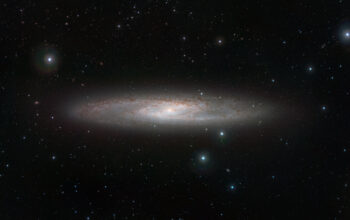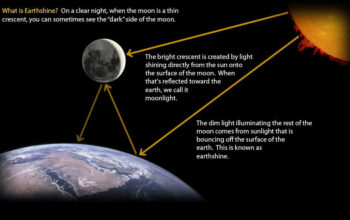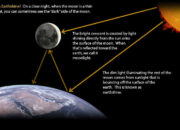Black holes have long been the subject of fascination and intrigue, captivating the imaginations of both scientists and the public alike. Their enigmatic nature challenges our understanding of the universe, presenting paradoxes that provoke critical thought about matter, energy, and the underlying fabric of spacetime. More recently, a compelling metaphor has emerged within astrophysics, suggesting that black holes may operate as cosmic thermostats, regulating the growth and evolution of galaxies in a manner analogous to temperature control in thermodynamic systems.
To embark upon this exploration, one must first appreciate the colossal scale and potency of black holes. At the core of many galaxies lies a supermassive black hole, a gravitational leviathan whose mass can exceed that of millions, or even billions, of suns. Surrounding these voids are vast accretion disks composed of stellar debris and gas, continuously spiraling into the black hole, transforming gravitational energy into electromagnetic radiation. The energetic outflows from active galactic nuclei directly influence the surrounding interstellar medium, thereby initiating a cascading series of events that affect star formation and galactic dynamics.
The notion of a black hole acting as a thermostat arises primarily from its ability to regulate the inflow of material into a galaxy and subsequently control star formation rates. The interplay between the black hole and its host galaxy is characterized by an intricate balance. When gas flows into the black hole, it triggers energetic feedback mechanisms, including relativistic jets and powerful winds that expel gas from the galaxy. This expulsion prevents excessive star formation, much like a thermostat that curtails heating to achieve a desired temperature.
Feedback processes are crucial to understanding the life cycle of galaxies. In environments where black holes exert significant influence, one observes an equilibrium state where the energy emitted by the black hole balances the cooling processes of the gas within the galaxy. As stellar density increases, so does gas temperature, leading to higher rates of star formation. In response, the black hole reacts by expelling energy to inhibit this runaway effect. Consequently, this cosmic interplay has profound implications on the morphologies of galaxies, the distribution of stellar populations, and the overall evolution of cosmic structures.
Empirical observations lend credence to the hypothesis that black holes function as regulators of galactic growth. Studies have demonstrated a correlation between the mass of the black hole and the stellar mass of its host galaxy—a relationship known as the M-sigma relation. The proportionality of these two entities suggests that the growth of black holes and galaxies is inextricably linked, implying that black holes may restrain the galaxy’s expansion through their feedback mechanisms. Such synchronicity hints at a well-orchestrated cosmic ballet, wherein both components evolve harmoniously across the eons.
Further elucidating this analogy, consider the concept of thermal runaway, a critical phenomenon in thermodynamics wherein systems can exceed stable thresholds. In galaxies devoid of substantial black hole influence, one could anticipate a lack of regulation; gas would collapse into stars unchecked, leading to excessively high star formation rates and, consequently, a rapid depletion of available material. Such situations could precipitate catastrophic outcomes, analogous to a thermostat malfunctioning and overheating a system. Here, the black hole serves as a crucial dampening mechanism, averting the potential demise of the galaxy through its inherent feedback processes.
A pivotal instance of black holes acting as cosmic regulators is evident in the quenching of star formation in massive galaxy clusters. Observational data suggest that environments characterized by high-density gas or those interacting with neighboring systems experience pronounced feedback from their resident black holes. As a result, these galaxies exhibit suppressed star formation rates relative to their less-massive counterparts. Such dynamics underscore the complexity of galactic evolution, wherein external influences and local conditions intertwine, further complicating the narrative of cosmic growth.
In addition, the significance of black holes as thermostats transcends isolated systems, extending into broader cosmic phenomena such as galaxy mergers and the development of large-scale structures. During galactic collisions, the gravitational interactions facilitate gas inflows toward central black holes, enhancing their accretion rates. As feedback mechanisms respond, they engender outflows that shape the properties of both galaxies, sculpting their morphology and stellar populations. Therefore, the black hole’s dual role as a baryon sink and a feedback agent becomes pivotal, imbuing the cosmic environment with complex behaviors reflective of evolutionary pressures.
As an operational metaphor, the black hole as a thermostat underscores the dynamic interplay between regulation and chaos in cosmological frameworks. Future research will undoubtedly continue to unveil the enigmatic secrets harbored by black holes, reconceptualizing their roles within galaxy formation theories. Improved observational technologies, such as advanced telescopes and gravitational wave detectors, will enhance our understanding of these celestial entities and unearth additional nuances of their influence on galactic evolution.
In conclusion, contemplating black holes as custodians of cosmic equilibrium engenders a fresh perspective on the fabric of galaxies. Just as a thermostat maintains a comfortable environment within a structure, so too do black holes govern the energetic dynamics of stellar systems. This metaphor encapsulates a profound truth about the universe: that seemingly chaotic interactions are orchestrated within governing frameworks, producing the rich tapestry of astronomical phenomena we observe today. The exploration of black holes will continue to illuminate the intricate web of connections that bind together the complexity of the cosmos.










